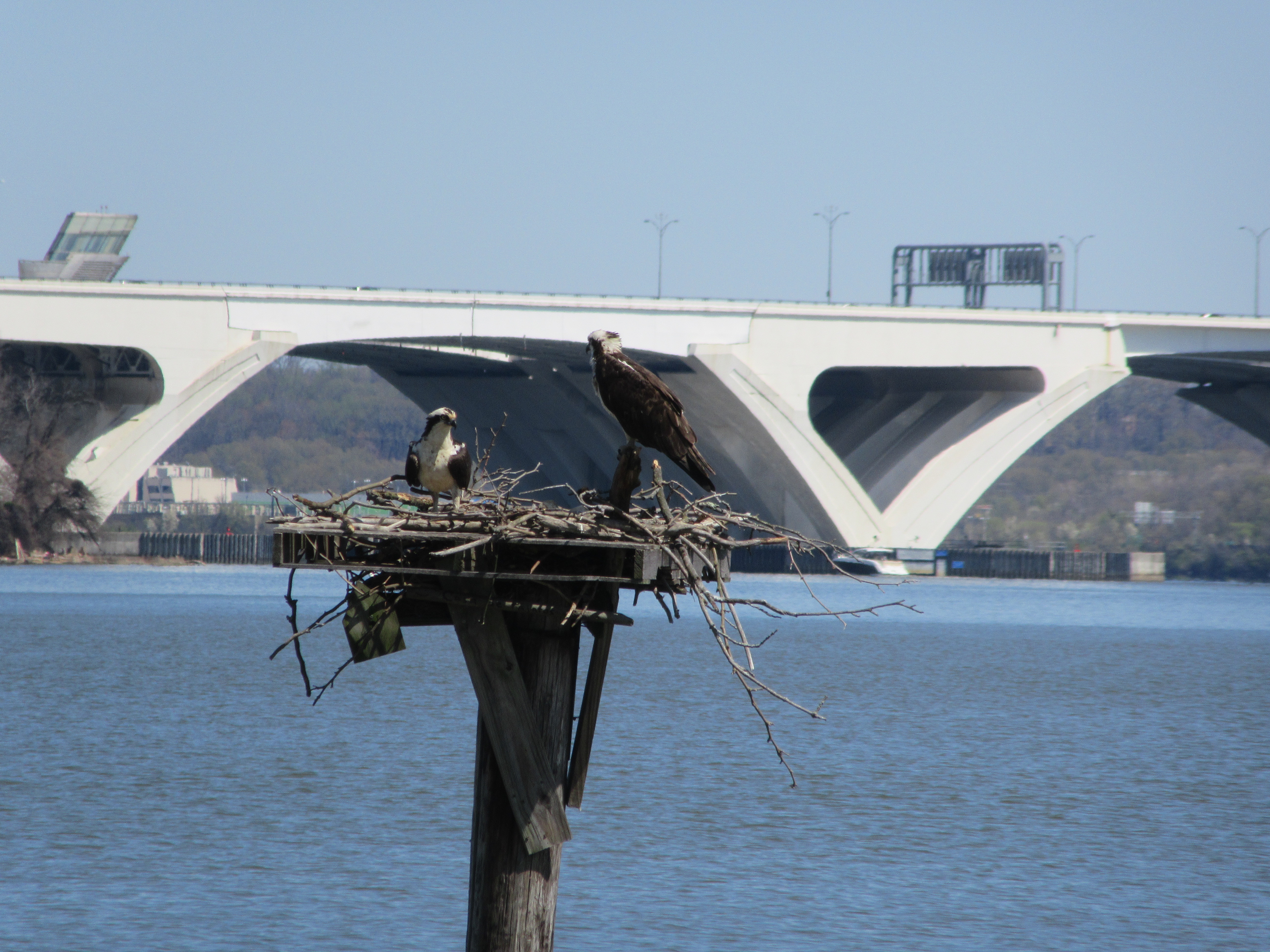Wednesday, February 19, 2025
During winter’s cold grip, nature may seem dead, but there’s a lot going on out there. Biologists say nature is dormant. For some wildlife, romance is in the air.
Bald eagles have mated, are incubating eggs and soon will raise young eaglets nestled down in their nests.
Barred owl courtship is underway. Signs of courtship behavior include a pair perched close together, bobbing heads and bowing, raising their wings and calling. Great horned owls too are mating.
Waterfowl like northern pintail ducks and tundra swans at Mason Neck will soon fly north to their breeding grounds.
Mammals More Active
This is prime breeding season for coyotes and foxes in our area, say county biologists. Some people report being awakened in the middle of the night by the piercing male fox’s mating call.
White-tail deer are dropping their antlers. They bred in late September through February. Does usually have twins between May and July, says Virginia’s Department of Wildlife Resources website.
Eastern gray squirrels do not hibernate and scamper about all year. Their nests, clumps of leaves and twigs called dreys, are very visible in trees about 30 feet above ground before the leaves come out. Males chasing females may be mating behavior. Their young will be born between March and April. On an occasional warm day, chipmunks may leave their burrows to forage.
Beavers, not true hibernators, are leaving the warmth of their wetland lodges more frequently. Muskrats also do not hibernate and by late winter they may be seen more frequently as they become more active in daylight hours.
River otters, active in the Potomac River and its tributaries, have been spotted catching fish and running about in Huntley Meadows Park, reports Chris King, the park’s Natural Resource Manager.
He observes, “This year has been a challenging one for some of our wildlife owing to a very poor mast crop which normally sustains the animals through the winter. Particularly low yields of acorns and hickory nuts as a result of the long-lasting snow and cold have made it difficult for foraging wildlife.”
Fish, frogs and turtles slowed their metabolism for winter and burrowed into the ground to survive in a state of dormancy. Some insects overwinter as larvae, nymphs, eggs or pupae. Some hibernate. Some insects like bees spend the winter inside hollow stems.
Plant Life
American robins and cedar waxwings flock and feed on berry-bearing shrubs and trees like American holly. Many bird species also feed on eastern red cedar and poison ivy berries. Heads up! Poison ivy’s hairy vine may not have leaves, but it too, like summer’s leaves, can cause rashes.
Some early-blooming buds are starting to open. February’s snowmelt revealed snowdrops blooming.
Beech and red oak trees kept last summer’s leaves all winter, but they will drop them soon. Maple tree sap will soon rise.
A March Preview
Though March weather can be unpredictable, spring will come, officially on March 20. Bulging buds will open. Overwintering insects and amphibians will emerge.
Male groundhogs will end their winter hibernation, leave their burrows and mate with females that give birth four weeks after mating. “Groundhogs begin to emerge when they sense the ground and air temperature is rising,” according to a Library of Congress article. “An extended winter could delay the growth of the plants they need to eat after their long hibernation. They will delay their mating season and emerge later to make sure that there is food available. Since they lose over half their body weight during hibernation, this is very important for their survival.” And no, despite the myth, their shadow does not predict when spring will arrive.
Ospreys will return from their southern wintering grounds, mate and reconstruct or build messy nests near waterways on light poles, platforms, channel markers, stumps and in trees. Like all raptors, they have keen eyesight, powerful talons and a strong curved beak for tearing their prey. Excellent anglers, nicknamed “fish hawks,” they will bring fish to their young.
Tree swallows, Northern rough-winged swallows and wood ducks will return. Bald eagles will bring fish and other prey to their eaglets.
Amid the sweet scents of spring, stinky skunk cabbage plants will rise. This plant gets its name from its odiferous “aroma” that the brave can whiff by breaking off a leaf. Virginia bluebells will brighten woodsy areas.
 For many years, ospreys have had a nest on a platform at the Belle Haven Marina.
For many years, ospreys have had a nest on a platform at the Belle Haven Marina.